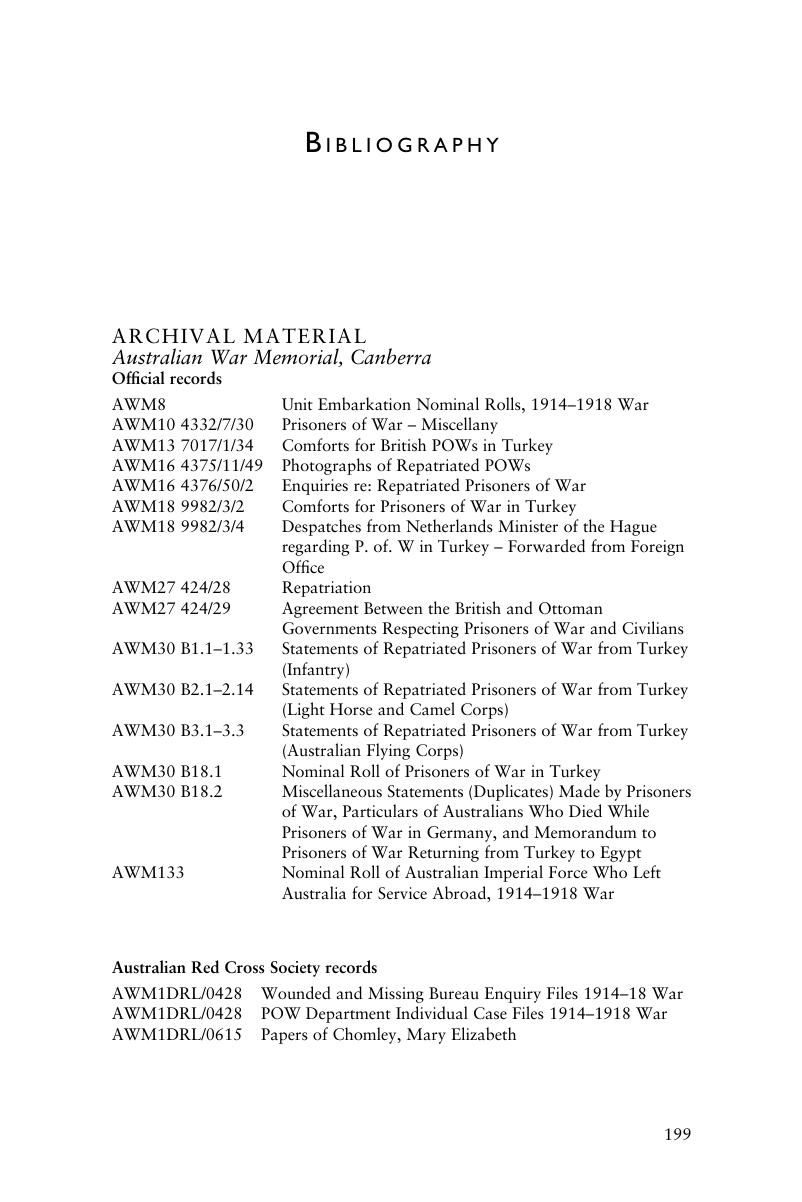Book contents
- Captive Anzacs
- Australian Army History Series
- Captive Anzacs
- Copyright page
- Contents
- Illustrations
- Maps
- Preface
- Acknowledgements
- Note on terminology
- Glossary
- Maps
- Introduction
- Chapter 1 Becoming prisoners of war
- Chapter 2 The circumstances of confinement
- Chapter 3 Shaping camp life
- Chapter 4 Outside connections
- Chapter 5 Reactions at home
- Chapter 6 After the Armistice
- Chapter 7 ‘Repat’ and remembrance
- Conclusion
- Book part
- Notes
- Bibliography
- Index
- References
Bibliography
Published online by Cambridge University Press: 16 June 2018
- Captive Anzacs
- Australian Army History Series
- Captive Anzacs
- Copyright page
- Contents
- Illustrations
- Maps
- Preface
- Acknowledgements
- Note on terminology
- Glossary
- Maps
- Introduction
- Chapter 1 Becoming prisoners of war
- Chapter 2 The circumstances of confinement
- Chapter 3 Shaping camp life
- Chapter 4 Outside connections
- Chapter 5 Reactions at home
- Chapter 6 After the Armistice
- Chapter 7 ‘Repat’ and remembrance
- Conclusion
- Book part
- Notes
- Bibliography
- Index
- References
Summary

- Type
- Chapter
- Information
- Captive AnzacsAustralian POWs of the Ottomans during the First World War, pp. 199 - 215Publisher: Cambridge University PressPrint publication year: 2018



